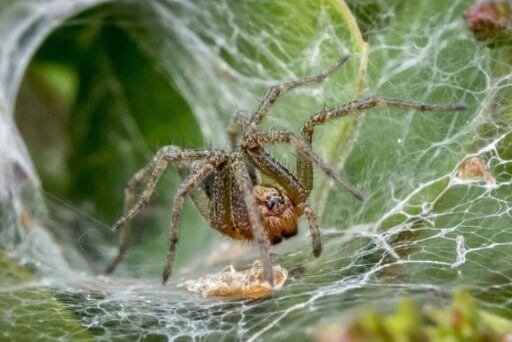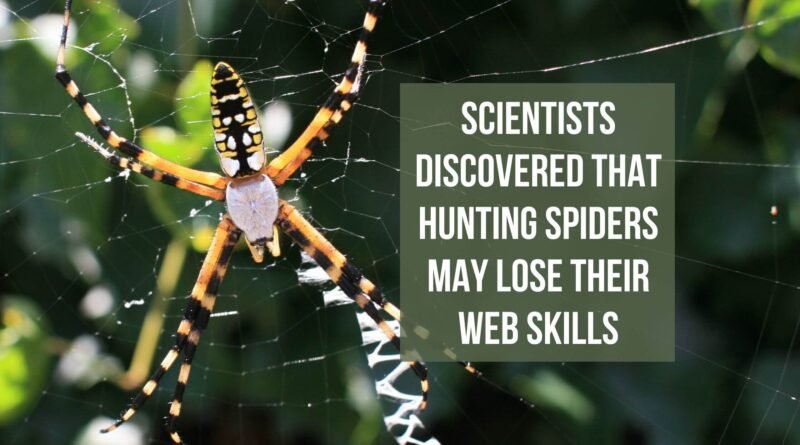Scientists discovered that hunting spiders may lose their web skills
Ground spiders are considered to be specialized in hunting the most dangerous, fiercer prey out in wild jungles with their mysterious hunting tactics. Many researchers have raised questions about the evolution of these hunting spiders. How do they capture fiercer, heavier prey with just their webs?
Several researchers studied the web-making skills of ground spiders to uncover the mysterious. And recently a 2017 study revealed a shocking discovery: ground spiders are losing their web-making skills. But why?
Ground Spiders:
Ground spiders produce special silk to form a web. The web is mainly used for catching their prey. The prey trapped in the web of spiders are usually ants and other dangerous animals. There are about 2200 species of ground spiders that belong to 125 different genera. Ground spiders are a major part of spider families. Many researchers studied the hunting behavior of these hunting spiders. The spiders also get injuries while they attack strong and dangerous prey. These injuries are the cost of their food which they have to sometimes pay for attacking fiercer prey. Most of the ground spiders have made some behavioral modifications according to the danger that they faced while attacking dangerous animals.
In 2010, Eberhard (who is not related to the current study) stated that ground spiders have made a prominent change by modifying their spinning apparatus to hunt the prey.

There are present special kinds of glands in spiders that secrete specialized silk to form the web. The silk secreted by the spiders helps to immobilize the prey. Once the prey passes through that sticky silk, the legs of the prey get immobilized instantly. Many researchers have tried to study the biomechanics of spider silk to capture the prey but there are no clear pieces of evidence because of the lack of the techniques.
Whenever the hunting spiders tried to catch the prey, In return they applied full force to get out of their trap. For doing so the silk needs to be strong. Although the silk secreted by spiders is not strong, it is the modifications of hunting spiders that help them in hunting dangerous animals. Hunting spiders secrete glue-coated silk which gets attached to the struggling prey. This technique by which the hunting spiders modify their silk is under research but till now no researchers have found any solid shreds of evidence for this modification.
Several questions have been raised by various researchers to find out clear evidence about the silk used during predatory attacks. different techniques have been used to find out answers. The use of high-speed videography is one of them. Others are cryo-scanning electron microscopy and using light microscopy to investigate the morphology of the glands. Some of the scientists have done fracture analysis of the silk fibers to know about the mechanical properties.

The research article was published online in the leading primary research journal, Journal of Experimental Biology on June 14, 2017, by the Company of Biologists Ltd.
To study the hunting nature of ground spiders, the research team collected spiders from different areas. Some of the spiders were photo-documented if they found resting in their webs. To perform in vitro studies on ground spiders they contained in plastic containers folded by paper tissues. These tissues need to moisten at least once a week.
To collect the silk samples, the glass slides are usually placed in the container where the spiders are present. These glass slides get removed after some days. Dissecting microscopes are used to study the spider’s silk samples.
For studying the silk produced during spiders attacks through high-speed videography. The scientists usually kept the spiders starving for about two weeks. A ground spider along with a prey animal is kept in a closed container. lenses are fitted to record the predator’s attack.

Akhilesh glass is also used during recording the predator’s attack full stop, the glass is usually fitted at the bottom of the container. Sometimes a bright light is passed through this glass to clear the vision of the predator’s attack. By using high-speed videography for studying the hunting nature of the ground spiders, scientists can reveal how the silk is secreted during the attack to grab the prey.
Mostly the prey starts biting the ground spiders in return to save themselves from the attack which results in severe injury to spiders. Spiders have usually two types of spinning glands which they used to secrete silk. One gland is used to secrete that type of silk which is used to build webs and the other type of gland is used to produce the silk used during capturing the prey.
As the hunting spiders are mostly involved in attacking the prey so the gland responsible for building the web goes inactive. The researchers discovered that hunting spiders’ silk-making skills have evolved around the time and are no stickier as they were before.




